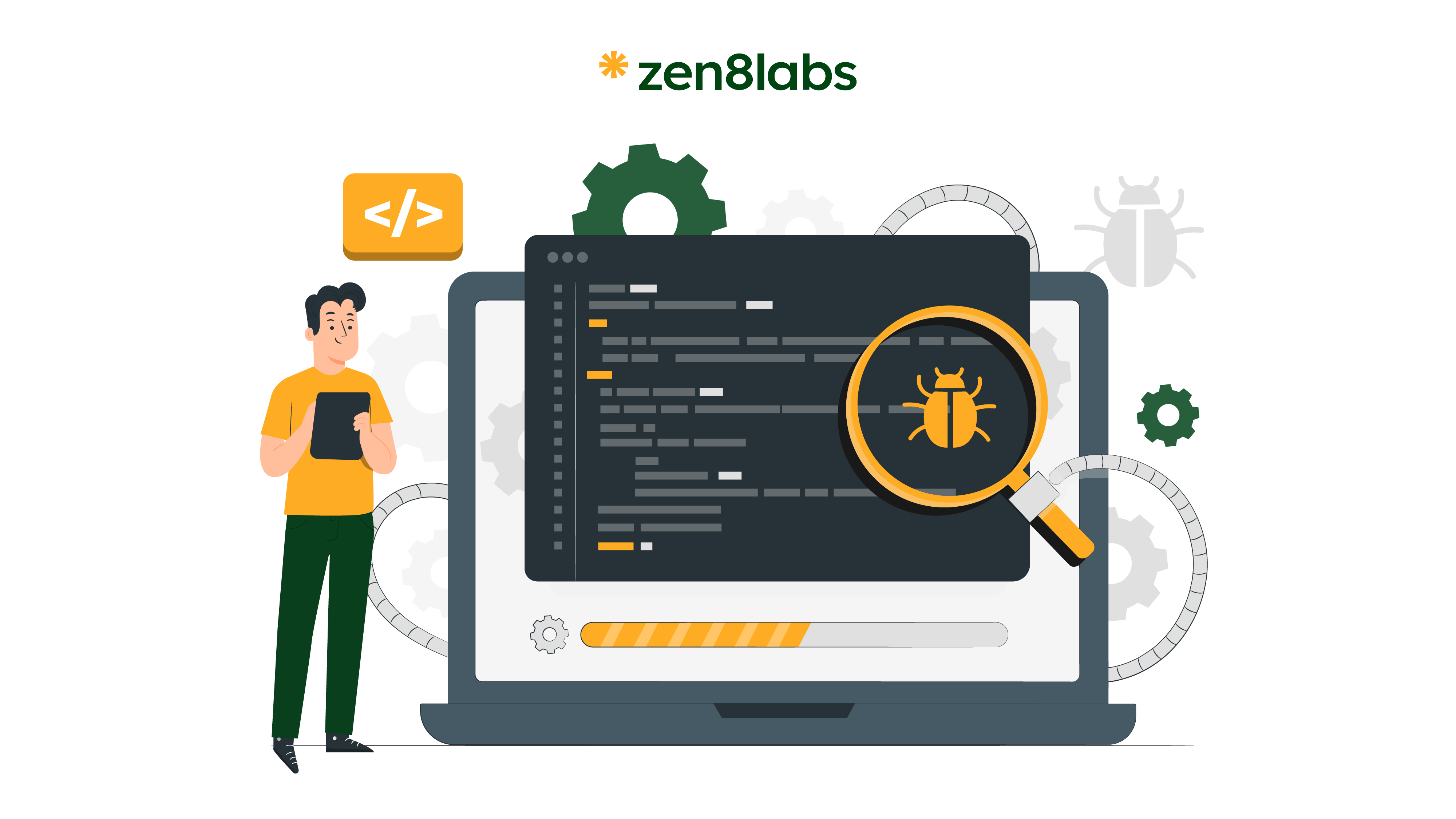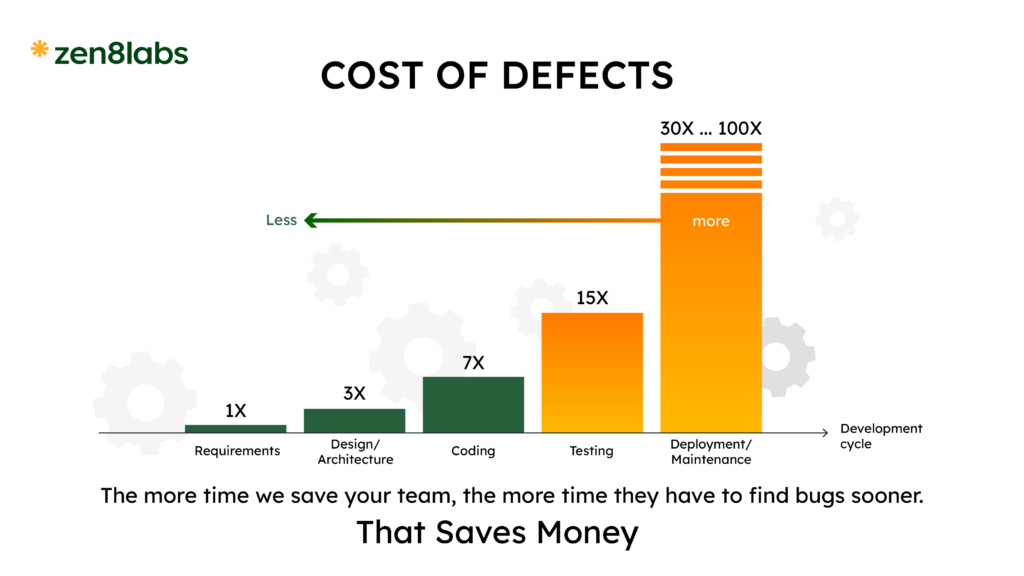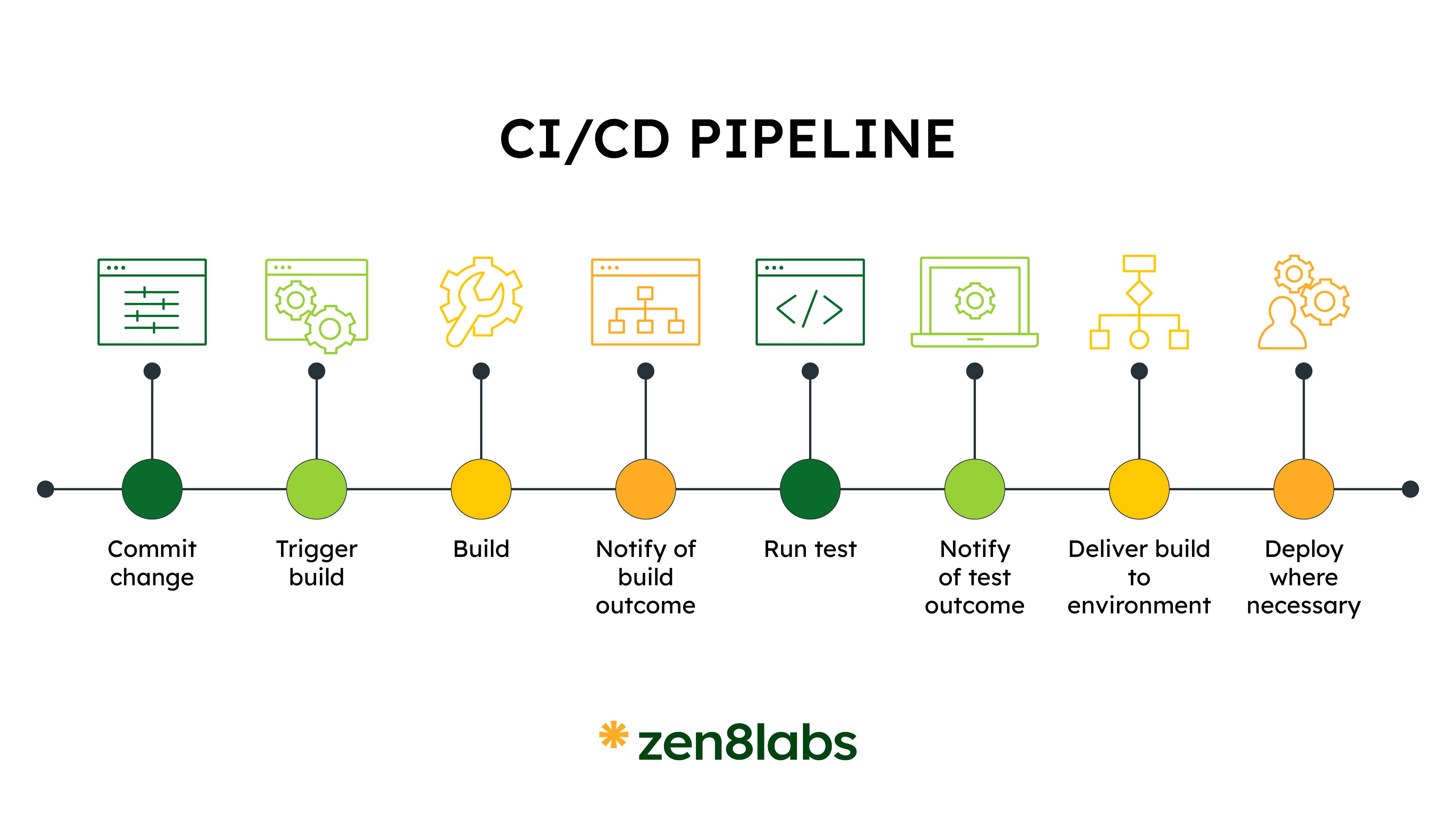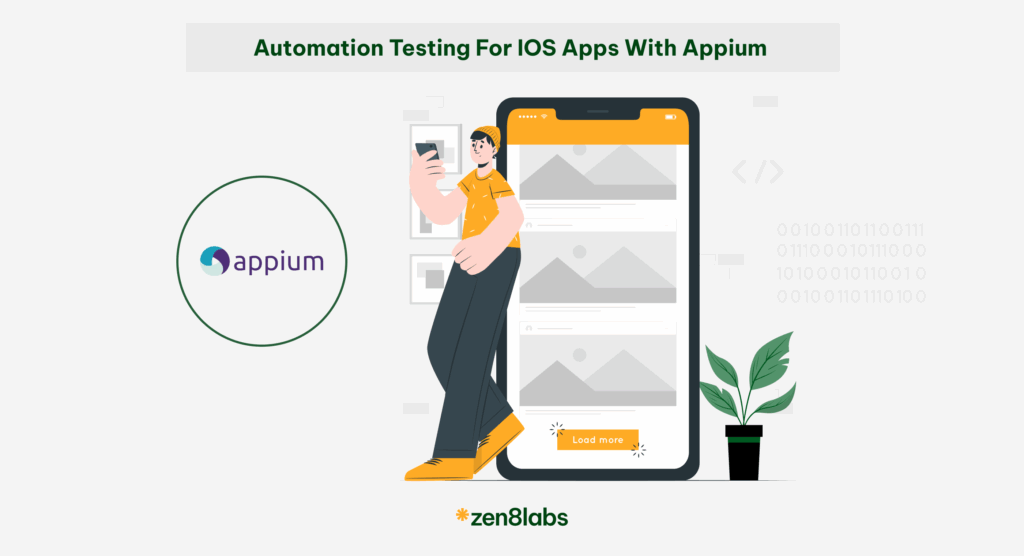
In software development, the sooner you test, the faster and more efficiently you can deliver a high-quality product. At zen8labs, we take this philosophy to heart, making early testing a foundational part of our process. By testing as soon as possible – whenever there is any project document to review or work on – we ensure that potential issues are caught early, resulting in faster development cycles, fewer bugs, and a better user experience. This article will explore the significance of early testing, how it works, and why zen8labs embraces it as a crucial component of our success.
Why early testing matters
The cost of identifying and correcting defects in software grows significantly as time progresses through the software development process. According to the National Institute of Standards and Technology (NIST), the cost of fixing a bug depends heavily on when it is discovered during the Software Development Life Cycle (SDLC). Fixing bugs that are found after the software has been released can be extremely expensive and risky, often costing significantly more than addressing them in earlier stages. Additionally, making changes to the code to fix a bug may impact other parts of the application, potentially introducing new issues and increasing the time and effort required for resolution.
The breakdown below illustrates just how dramatically these costs can increase over time:
- Requirements phase: The cost to fix a bug is at its lowest, at 1x.
- Design phase: The cost increases to about 3x to 5x.
- Coding phase: The cost grows to around 10x.
- Testing phase: The cost can escalate to 15x to 20x.
- Post-release: Fixing a bug can cost anywhere from 30x to 100x or more.
This exponential rise highlights the importance of early testing. By addressing defects during the requirements or design phases, companies can prevent them from snowballing into larger, more complex, and costlier issues later in the SDLC. At zen8labs, we prioritize early testing – whether during the review of project documents or the development process – ensuring that potential problems are identified and corrected before they become costly liabilities. This proactive approach helps us avoid late-stage rework and ensure faster, smoother development cycles with fewer bugs and a better user experience.

What is early testing?
Early testing refers to the practice of starting testing activities as soon as possible, even before a single line of code is written. The principle, often known as shift-left testing encourages development teams to consider quality and testing at every phase of the project, from initial planning and design through coding and integration.
Testing in the context of zen8labs’ development process isn’t limited to just functional testing, where you check if the software works as expected. It also includes requirement and UI/UX design reviews, where potential issues related to the clarity of requirements and the application’s user interface, user experience, and overall usability are identified before coding begins. During the requirement review, we ensure that specifications are clear and testable, minimizing ambiguities. In the UI/UX design review, we focus on ensuring that visual and interactive elements are intuitive, accessible, and user-friendly. This dual approach helps prevent costly changes and rework later in the development process.
Our approach to early testing
We believe in catching issues early to prevent costly fixes down the road. Testing is integrated into every stage of our development process. As soon as we begin a new project or feature, our testing activities kick in. Here’s how it works:
Requirements review
We involve our QA team during the requirement gathering phase to ensure that the specifications are clear, comprehensive, and testable. This proactive approach helps identify ambiguities or inconsistencies early on, allowing us to address potential issues before they become problematic. An essential aspect of requirements testing is also assessing any new requirements to determine if they conflict with existing functionality. By evaluating how new features interact with established behavior, we can prevent regression issues and ensure a seamless integration of changes. By scrutinizing requirements thoroughly, we set a solid foundation for the development process and prevent misunderstandings that could lead to costly changes later.
UI/UX review
Once the requirements are established, our QA team conducts design reviews to evaluate the user interface (UI) and user experience (UX) aspects of the application. During this phase, we assess various factors such as usability, accessibility, and overall visual appeal. Our design review checklist includes:
- Consistency: Ensuring that design elements are uniform across the application.
- Clarity: Verifying that UI elements are intuitive and easy to understand.
- Responsiveness: Checking that the design adapts well to various screen sizes and devices.
- Accessibility: Ensuring compliance with accessibility standards (e.g., color contrast, text alternatives).
- Compatibility with existing features: Evaluating whether the new UI integrates well with current functionalities without causing conflicts or confusion.
- Complexity of actions: Assessing whether the required actions for users are straightforward or if they necessitate complex steps, which could hinder the user experience.
These reviews help us identify potential design flaws and optimize the user experience to ensure that it meets both functional and non-functional requirements.
Unit testing
Unit testing is a critical component of the development process. It involves testing individual components or modules of the software to ensure they function correctly in isolation. By writing unit tests, our developers can validate that each piece of code performs as intended before integrating it into the larger system. This approach helps identify issues early in the development cycle, reducing the likelihood of defects cascading into more complex areas later on. At zen8labs, we emphasize the importance of unit testing for several reasons:
- Immediate feedback: Unit tests provide quick feedback to developers about the correctness of their code, allowing for rapid adjustments and improvements.
- Code quality: Writing unit tests encourage developers to create cleaner, more modular code, as they must consider testability during development.
- Reduced debugging time: Identifying and fixing bugs at the unit level is generally quicker and less costly than addressing issues found later in the development process.
- Documentation: Unit tests serve as a form of documentation for the code, providing examples of how each component is expected to behave.
By incorporating unit testing into our development process, we aim to build robust software solutions that meet the highest quality standards.
Automated integration testing
Automated integration testing is an essential practice that verifies the interactions between various components of our software applications. While unit tests focus on individual pieces of code in isolation, integration tests evaluate how these components collaborate to ensure they work together as a cohesive system.
Key aspects of automated integration testing:
- Early detection of issues: Integration testing plays a crucial role in identifying interface defects between components early in the development process. By assessing interactions as soon as components are integrated, we can promptly catch issues that may arise from changes in one module impacting another, thus avoiding costly fixes later.
- Continuous Integration (CI): We integrate automated integration tests into our CI pipeline at zen8labs. This approach ensures that integration tests are automatically executed every time a code is committed. As a result, we can confirm that new changes do not disrupt existing functionality, maintaining the stability of the entire system throughout the development lifecycle.
Continuous non-functional testing
Continuous non-functional testing is also an integral part of our CI/CD pipeline, ensuring that our applications not only function correctly but also meet essential performance, security, and usability standards. Unlike functional testing, which focuses on whether the application behaves as expected, non-functional testing evaluates how the application performs under various conditions.
Key aspects of continuous non-functional testing:
- Performance testing: We assess the application’s responsiveness and stability underload to ensure it can handle expected user traffic and data volume. This includes testing for scalability, throughput, and latency, which helps us identify potential bottlenecks before they impact users.
- Security testing: Continuous security testing is vital in safeguarding our applications against vulnerabilities. We conduct automated security scans as part of our CI/CD process to identify and mitigate security risks early, ensuring that our software complies with industry standards.
- Automated execution: By automating non-functional tests within our CI/CD pipeline, we ensure that they run consistently with each code change. This approach allows for rapid feedback, enabling our development teams to address any performance or security concerns immediately.

Benefits of early testing at zen8labs
We recognize that early testing brings significant advantages to our development process. By integrating testing activities from the beginning, we can enhance the quality of our software while minimizing risks. We measure the outcomes of our early testing initiatives using various metrics to ensure continuous improvement and effectiveness.
Key benefits:
- Reduced cost of defects: Early testing allows us to identify and address issues when they are less complex and less expensive to fix. We measure the cost savings associated with early defect detection by comparing the expenses incurred during the development phase to those in later stages, helping us quantify the financial impact.
- Faster time to market: By catching issues early, we streamline our development process and reduce rework. We track the average time taken to resolve defects and how it affects our overall project timelines. This data helps us understand the efficiency gained through early testing.
- Improved software quality: Early testing contributes to higher software quality by ensuring that potential problems are identified and resolved before they escalate. We utilize metrics such as defect density (the number of defects per unit of code) and customer-reported issues post-release to gauge the quality of our software and the effectiveness of our testing strategies.
- Enhanced team collaboration: Involving QA in the early stages fosters collaboration between developers and testers, promoting shared ownership of quality. We assess this benefit through team feedback surveys and collaborative project metrics, allowing us to refine our processes further.
- Increased customer satisfaction: By delivering a high-quality product that meets user expectations, we enhance customer satisfaction. We measure this benefit through user feedback, satisfaction scores, and retention rates, enabling us to assess the impact of early testing on our end-users.
Conclusion
As we move forward, zen8labs plans to keep using and improving our early testing approach in all our future projects. This will help us stick to our high-quality standards, keep our customers happy, and stay on top of things as the software world keeps changing. If you want to see how our high quality applies to our projects then reach out to us here, we’ll create something that is truly out of this world!
Toan Tran, Head of Quality Assurance


